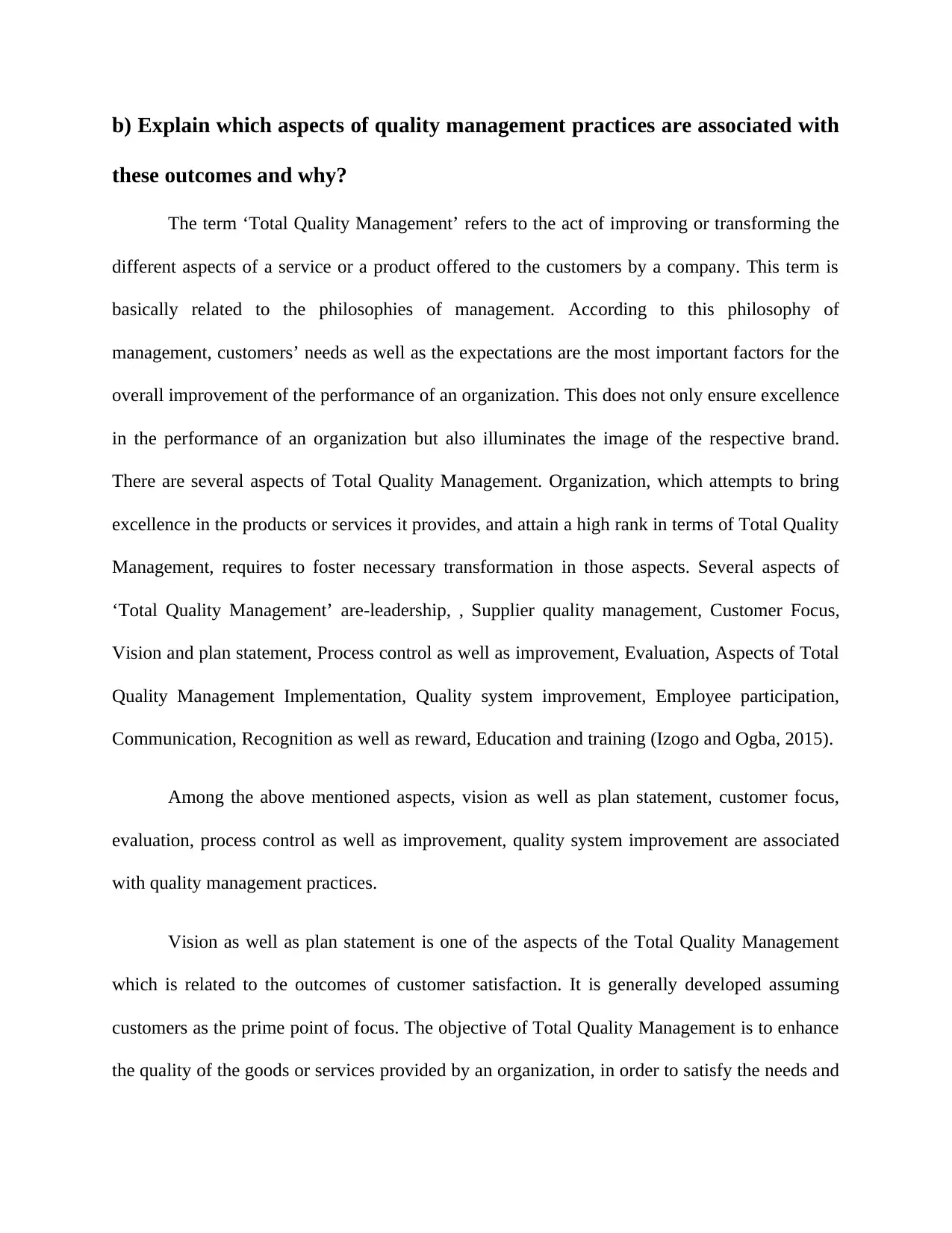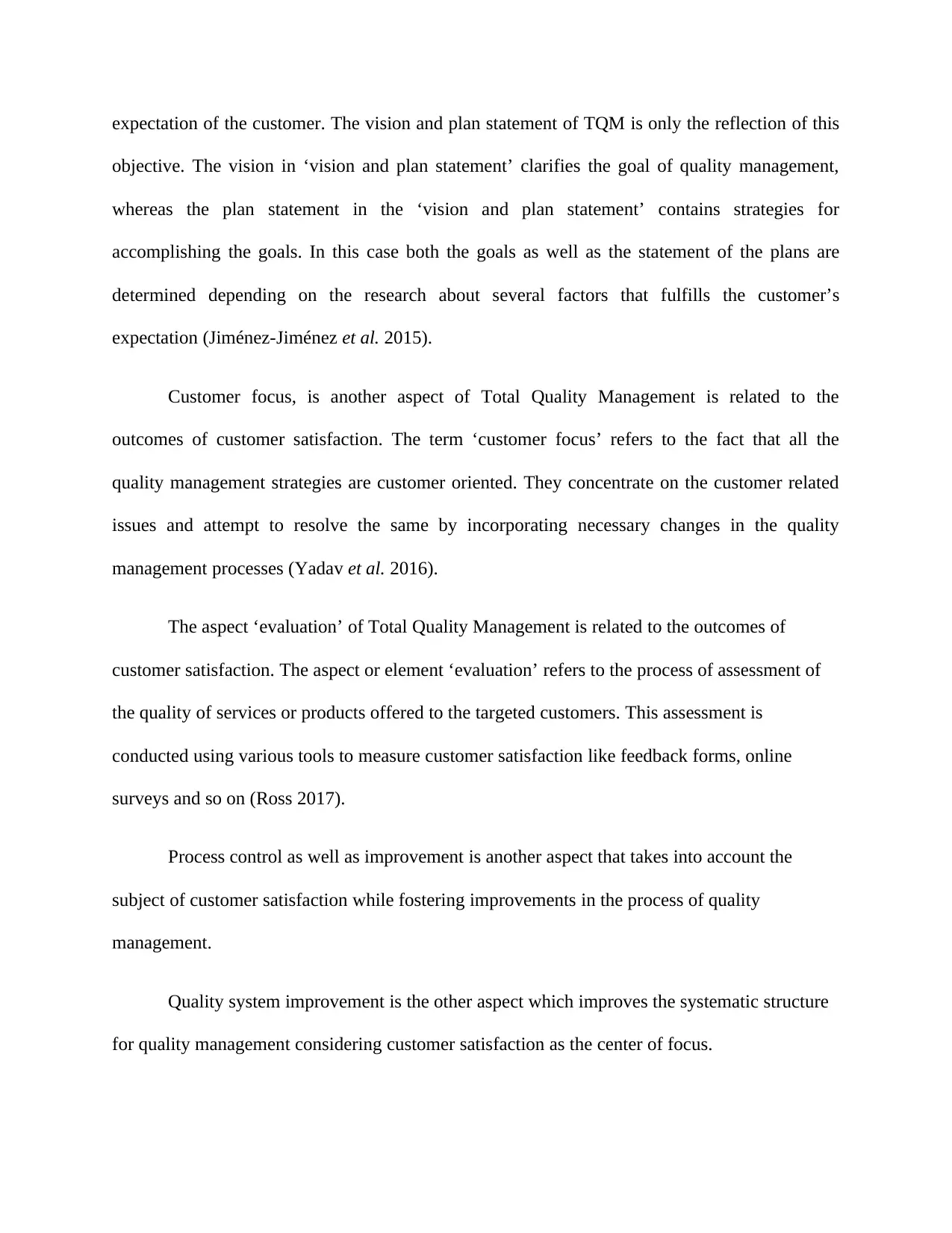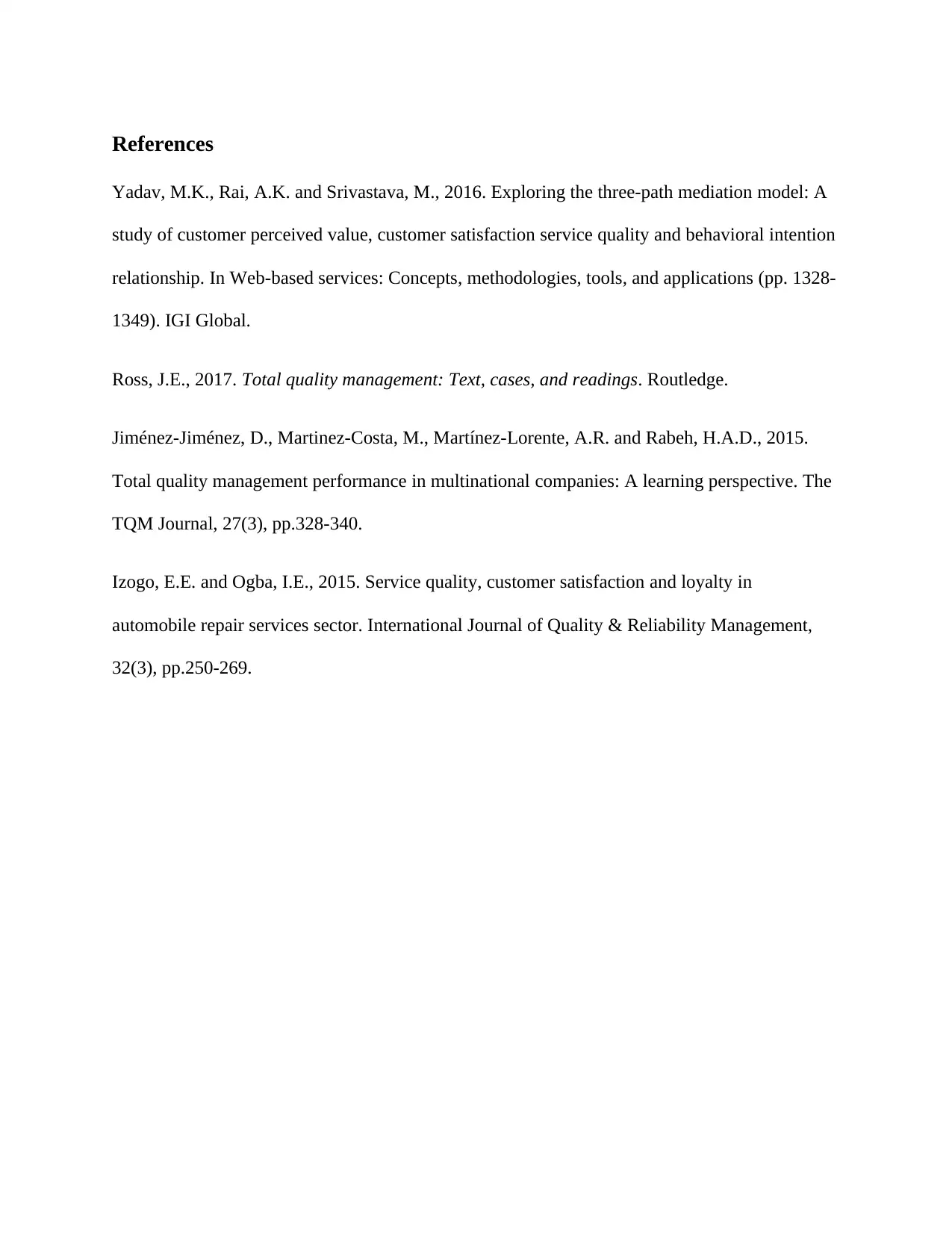Quality Management's Impact on Customer Satisfaction and Performance
VerifiedAdded on 2022/11/13
|4
|767
|179
Report
AI Summary
This report delves into the influence of quality management practices on customer satisfaction, service performance, and organizational performance. It begins by defining customer satisfaction, emphasizing its importance in today's competitive market. The report then explores various aspects of Total Quality Management (TQM), including leadership, customer focus, vision and plan statements, process control, evaluation, and quality system improvement. It highlights how elements like vision statements, customer focus, and evaluation contribute to customer satisfaction. The analysis also references academic sources to support its claims, providing a comprehensive understanding of how organizations can enhance their quality management processes to meet and exceed customer expectations, ultimately leading to improved organizational performance.
1 out of 4









![[object Object]](/_next/static/media/star-bottom.7253800d.svg)